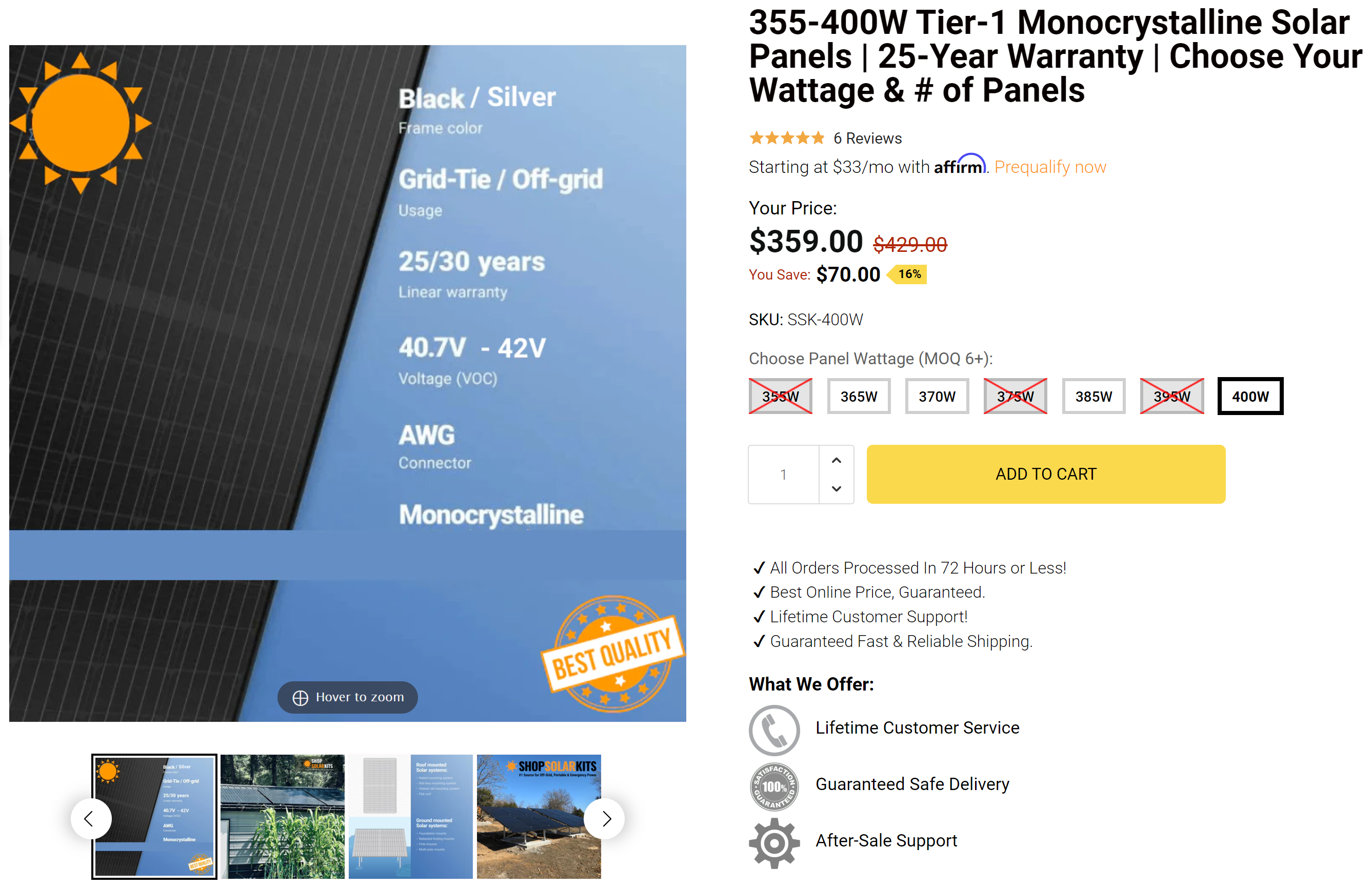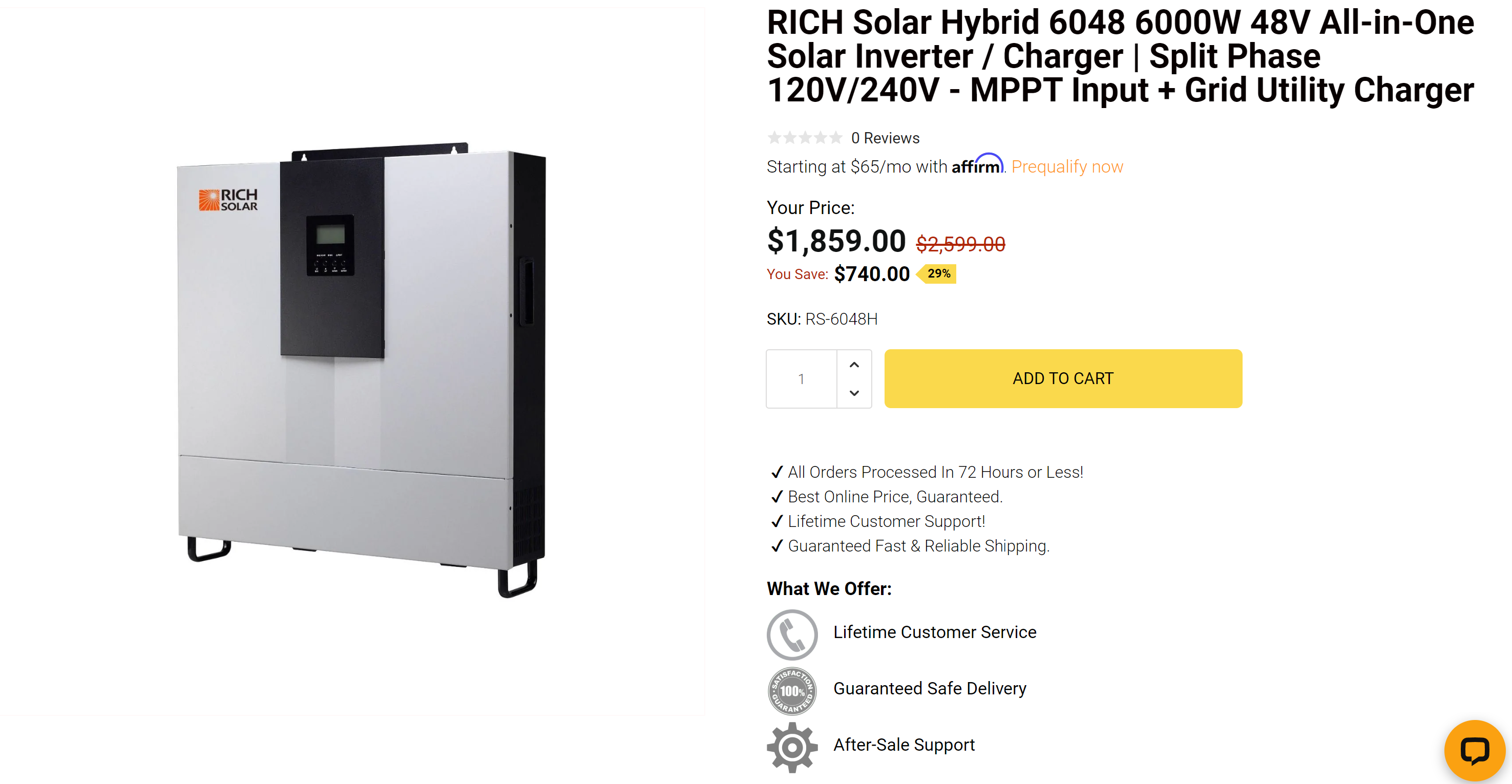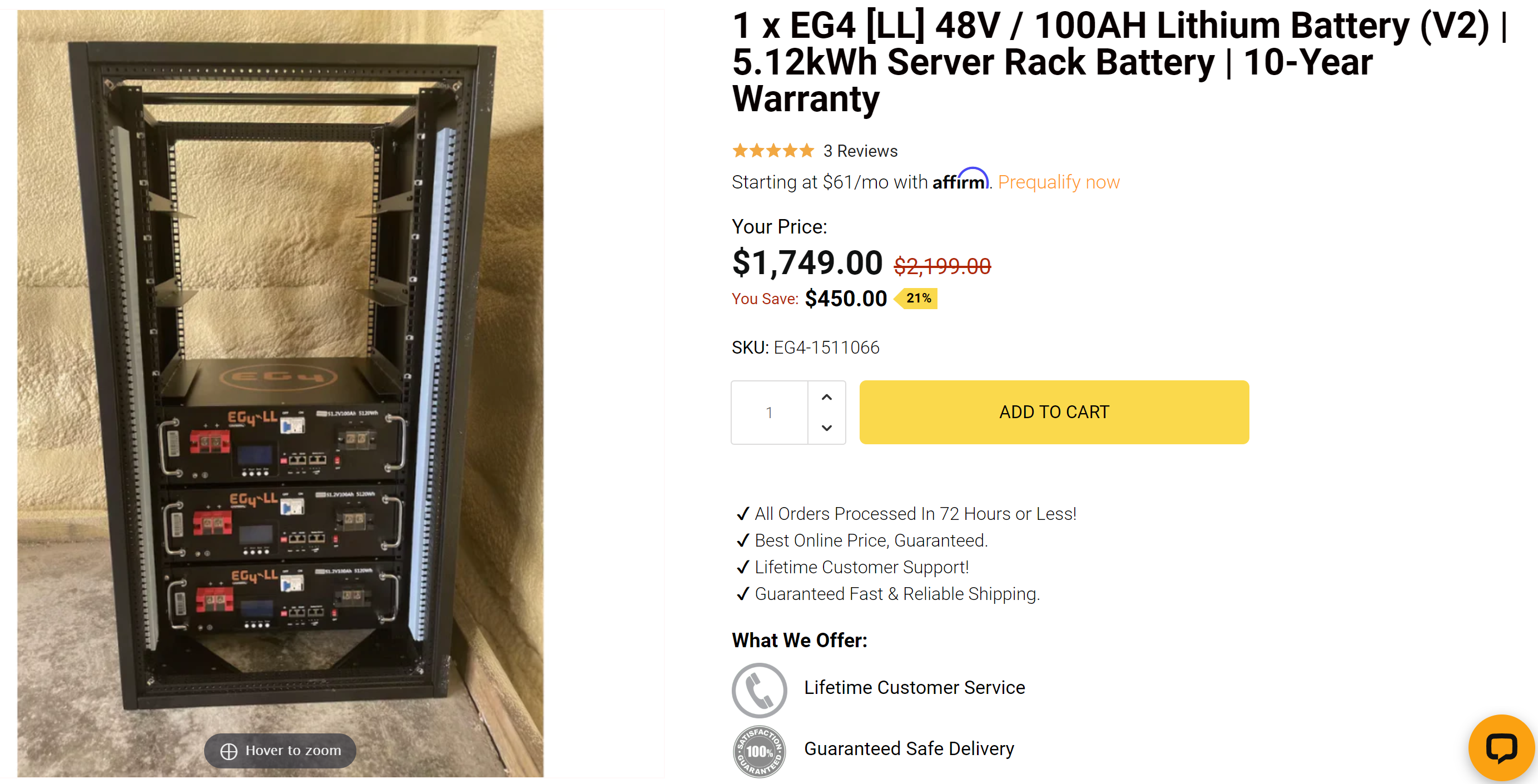Purchasing Solar Components
In this article, we go over the components purchased for our first solar install. We tried to find a website to buy solar panels specifically compatible with Ecoflow Solar Generators (my initial solar design). It was not easy to determine compatibility from what I could find online, so I contacted every major website and asked them to help me find the solar panels I needed.
The first thing I found is that most websites did not provide an easy way to contact sales or support. That filtered out a lot of them. Only a handful of websites responded to my request. Out of these, only one website really engaged with me to actually help me find the solar panels I needed. They responded to every email, every chat request and every call very consistently, and with a lot of patience. Some calls went as long as 40 minutes. It was clear to me that even if I would find a cheaper price online, I would go with ShopSolarKits.com.
The other vendors either never replied, or the support/ sales people were clueless, often giving me completely and obviously wrong recommendations, which made it very clear to me that they were not even reading my requirements properly. One of these companies was a very reputed solar panel manufacturer, so that was disheartening to note. With our approach, we needed an online partner who is responsive, patient, clear, responds over email and chat, and does NOT flinch to get into the details on a very long phone call, with a customer who only has very little knowledge about solar internals.
After a lot of discussions, it became very apparent to me that it would be much cheaper and more convinient to buy a complete DIY system, than buy an Ecoflow compatible system with (very) expensive batteries, which were mostly designed for people who move around a lot. Once I found my partner, it was clear that it is better to shift my entire design from one vendor Ecoflow, to another ShopSolarKits.com. Things were already complicated. I did not want to make it worse by buying different components from different vendors. It was better to buy components compatible with each other from a single vendor who could guarantee it.
Solar Panels
If you remember from my previous article, I planned to get 32 panels (originally from the Ecoflow design), but had to purchase one more for the inverter based design I went with later. I do plan to get 3 more to maximize my second inverter, and 18 more later along with one more inverter to cover the remaining areas of my roof. I plan to get cheaper panels for my north roof.

These are the solar panels I purchased. I picked them because sales sent me the user manual and they happen to be compatible with Ecoflow as well. I just went with these. Note that they use different manufacturers for these panels based on what is available. So, if you want specific panels, make sure to ask them to generate the invoice with the Manufacturer name entered. With such large purchases, I always want to talk to a sales person and generate a personalized invoice I can pay. It can take a while for these to be shipped. And I needed to make space for these in my garage. Prices fluctuate (a little), I believe these were more expensive by a few dollars on Black Friday!
Inverter
The next step after deciding NOT to go with Ecoflow was to get the inverters. The single 12,000 watt Solark inverter was too rich for me. I went with cheaper dual inverters from RICH solar. I preferred to get multiple inverters over a single one which might blow out and I would lose all solar power. With dual inverters, "load balancing" is possible, and I could distribute the solar load across more, smaller inverters. I found online that inverters contain large transformers, so I am not surprised, they blow out eventually. These were the components which shipped the fastest.

I spent quite a bit of time trying to figure out the differences between the 6048 and the cheaper 6548. Finally the actual manufacturer told me that the 6548 is the same as the 6048, but the 6048 has better components. Even though the user manuals looks like some features are different or have different options, they clarified that it is just a difference in language. In reality, the software options are the same, and equivalent to each other. This is very important to remember.
In hindsight, I should have gone with MPP Solar because these are manufactured by them - however, MPP solar inverters were not in stock on Black Friday. One of the problems I faced because of not going with MPP solar 6048 is that I can't buy the optional Wi-Fi Module from MPP Solar and use their mobile app to remote control the inverter. I reached out multiple times to RICH solar from different channels and confirmed that, their branded inverter does NOT support the Wi-Fi Module as of now. This is not such a big deal as I have a spare motherboard with Ryzen CPU at home, which I can connect for remote access to the inverters. I just need to get a PC box and probably RAM.
Batteries
The next items to pick were the batteries and the server rack. It is not a good idea to stack batteries on the floor, so it was imperative to get the rack. The rack comes with the bus bar - which solved that requirement as well. I have not opened the packaging yet, but the rack comes fully assembled (looks like). You should read the previous articles to understand why I went with 3 batteries for 2 inverters for now, insted of four (besides the obvious cost issue).

There were some tense moments, when the batteries arrived after the inverters, with "Lithium Ion" batteries labelled on the boxes. Then, I realized I saw nowhere on the site that it was LFP. Also, I did not remember the user manual mentioning that. So, I thought it was a switch and bait, and that explained where these were "cheap", compared to the $4,000 Ecoflow Power kit 5 kWh batteries. But, turns out these are LFP batteries after all, and the packaging was probably mislabeled (it was black ink on the box, not a label on the box). Phew! I am pretty happy, these are LFPs. Also, they arrived on a shipping pallet. And was impossible to move, so I had it placed in the garage and covered the batteries with moving blankets. Later, I called some handymen over to move these inside the house, because it was 28 degrees fahrenheit outside in the night, and the batteries can only tolerate 32 degrees fahrenheit at the most. The inverters came in bigger boxes, but were much lighter to lift and put within the house, I should note. The batteries feel very dense - like solid iron to lift.
Right now, I am waiting for the solar panels to be shipped (it has been a very, very long wait), and for the electrical install (supposed to happen today, but cancelled because of snow). More updates at that time!
- TJ
Published Dec 16, 2022